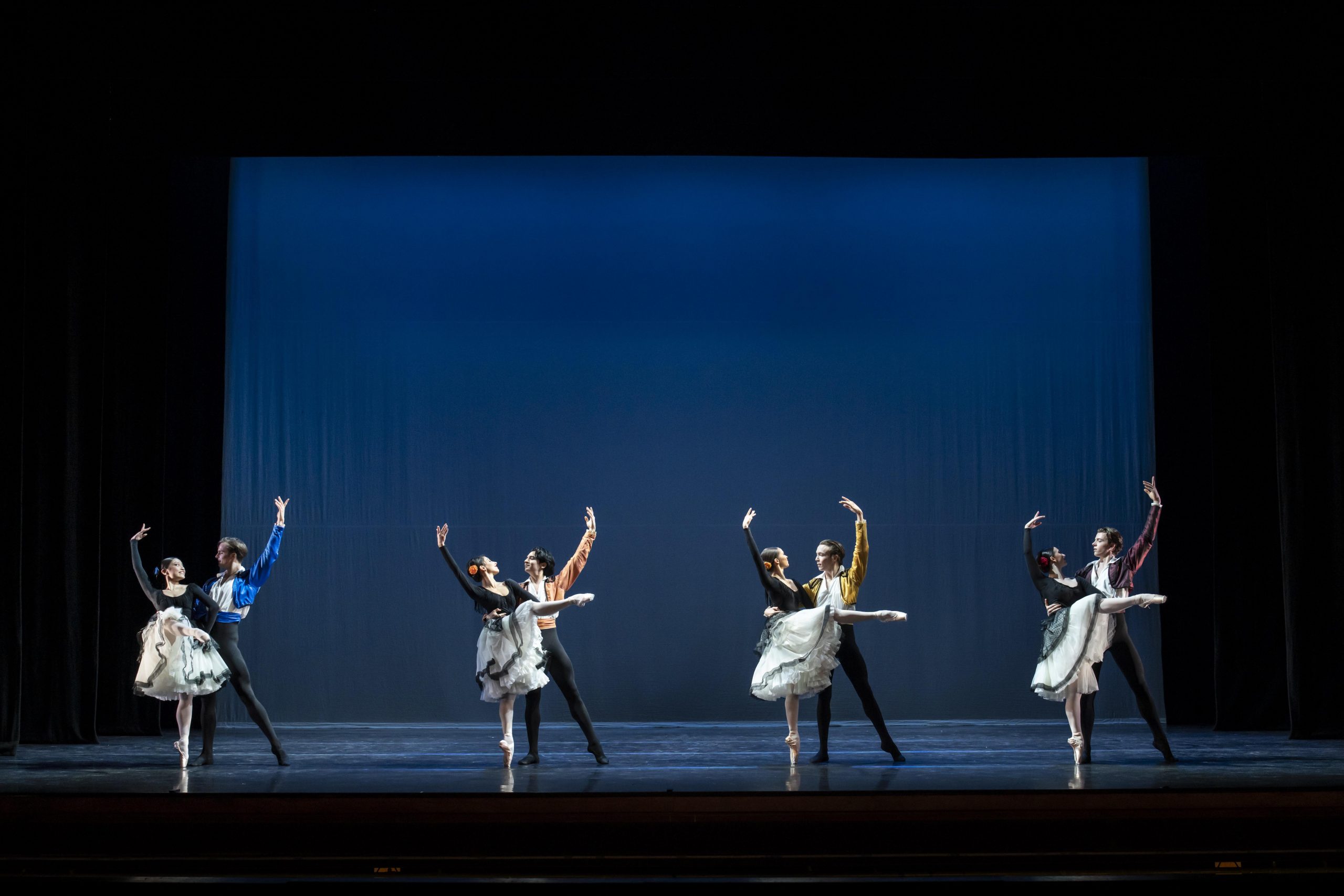
Culture writer Darcy Brown reviews Carlos Acosta’s BRB2 and finds the performance to successfully showcase both traditional and modern ballets that can be enjoyed by all audiences.
The Birmingham Royal Ballet Director, Carlos Acosta, proves his genius in this gala celebration of classical ballet, performed by the BRB2 company in their inaugural tour. BRB2 is a new performance programme, made of five founding members from around the world who shared in a joyful display of talent, athleticism and innovation at the Wolverhampton Grand Theatre. The objective of this initiative is to reach out to some of the emerging talent of the ballet world and forge a direct gateway into the leading international companies. Prioritising inclusivity and accessibility, this small company, in their debut touring showcase, arguably snatches the title as the jewel in Birmingham’s cultural crown.
…the jewel in Birmingham’s cultural crown
Distancing itself from any elitist preconceptions of the style, this performance confirms that ballet, with its centuries-old traditions and artistic complexity, can be enjoyed by all audiences. With a running time of 1 hour 40 minutes compared to the typical 3 hour ballet productions, the show consisted of twelve dances from a wide range of ballets, old and new. Each performance, differing in choreography, style and plot, showcased the talents of the five graduates alongside guest members from the Birmingham Royal Ballet. It allowed younger talent to take on more central roles which would usually take them years to reach in regular companies. It is safe to say no one fell short of expectation.
Opening on an empty stage with no backdrop or set except for a ballet barre, we get the feeling of sitting in on one of their rehearsals. This sensation is confirmed as all twelve dancers walk onto the stage dressed in outside clothes, making their way towards the barre, chatting and beginning to warm up, as though entering the studio. With each dance, one or two of the cast would step forward as a backdrop came down and divided them from the others. As each dance would begin, the audience would be transported to the world of that ballet, be it Swan Lake or La Sylphide, before returning to the original, informal scene with some dancers congratulating each other with hugs and helping each other undo costume clasps. Although unconventional, this structure really focused the status of the dancers as emerging artists, graduating into higher intensity performances and supporting each other throughout. In the absence of a plot, the audience finds itself investing in the dancers themselves rather than the characters of a story, creating that same supportive atmosphere in the audience that seems to permeate the company.
It is safe to say no one fell short of expectation
The first act featured more of the traditional ballets, easing us in with the choreography of the renowned Frederick Ashton and August Bournonville. From the soft and elegant pas de deux from Rhapsody to the high-spirited La Sylphide, a joyous introduction drew attention to the guest dancer Eric Pinto Cata for his astounding leaps and inviting smile. A special guest appearance from Celine Gittens (Birmingham Royal Ballet Principal Dancer) was a personal favourite as she embodied the swan, Odette, with equal power and delicacy. The highlight of the first act, Dying Swans, contrasted the traditional styles of the previous dances and instead took on a realism that was both disturbing and fascinating. Eric Pinto Cata, as a dying swan, performed an almost supernatural replication of a bird in painful distress. The extension of his arms, spine and neck were exaggerated in a mixture of softness and spasmodic contortion that held the audience in stunned discomfort. It perfectly encapsulated what ballet is capable of as an art form, using unnatural movement of the body to represent the natural world or capture a precise moment with uncanny precision.
The second act began with continued momentum, exploring some of the more modern classics such as The Four Seasons of Buenos Aires and Carmen. The opening performance called End of Time featured two of the founding members Maïlène Katoch and Mason King in a fluid togetherness that melted the boundaries of their bodies and time. A mixture of abstract shapes and effortless lifts, it once again showed the range of movement ballet can cover as a style of dance, as well as the talents of its new generation. Buenos Aires, for example, showed a balletic take on a Latin style, while Les Bourgeois gave us a lovable, drunken character who was still somehow capable of butterfly kicks and precise fouettes. It wasn’t until the second act that the final member of the BRB2 company was introduced, Frieda Kalen and she was definitely worth waiting for.
Performing two solo pieces, her presence filled the stage in her renditions of two of the more abstract pieces. Je ne Regrette Rien was the standout performance. Pushing the limits of the ballet style with flexed feet and lyrical performance, it embodied the cathartic nature of the song. Kaden’s two performances required just as much character and performance flair as strong technical ability which were delivered memorably, her ability to express such personal flair foreshadowing the many central roles she will surely take later in her career.
A perfect introduction to ballet and to the newborn company…
Ending with a group performance which provoked many cheers from the audience, the short nature of the production did not inhibit its ability to uncover the depths of classical ballet or hinder the dancers’ ability to win the admiration of their audience. A perfect introduction to ballet and to the newborn company, Carlos Acosta demonstrates the rich array of talent based in Birmingham and leaves us eagerly anticipating BRB2’s next tour.
Rating: 4.5/5
Enjoyed this? Read more Redbrick Culture here!
Art Exhibition: Mastering the Market
Comments